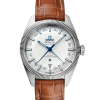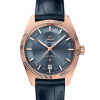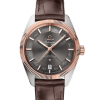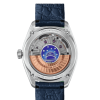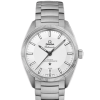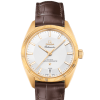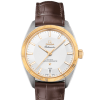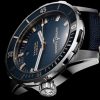
Once upon a time, the Omega Constellation was Omega’s flagship. It was the year 1952 when this spectacular collection was initially released. Its first model – the Century watch – is a limited-edition automatic chronometer wristwatch released in 1948 to celebrate the company’s 100th anniversary. According to Omega’s ‘Journey Through Time’, it was this specific timepiece that drove the first to make a new collection of self-winding chronometers. Omega came up with an iconic name and logo for the collection: it was called ‘Constellation’ with the case-back designed by the Geneva observatory.
The name Constellation has its etymology originated from the Latin word ‘constellatio’, which can be translated as a ‘set of stars’, and the modern astronomical term which dates back to the middle of the 16th century translates: “an asterism, an arbitrary formation of stars perceived as a figure of the sky.” The name was inspired by the continuous movement through the cosmos and symbolised consistency and certainty like the movement of a solid mechanical watch. The logo of the Geneva observatory’s cupola also briefly hints that it is a chronometer timepiece developed and tested to very high requirements.
The distinctive features of the early ‘Connies’ (an elegant and very detailed watch collection in the 1950s) were reinvented by the test on the dials which made the company switch to a convex-sided dial. This new adjustment was named Pie-Pan, with this unique component introduced anew in the fresh Omega Globemaster. It must be duly noted here, that this watch collection was at first known as the Omega Globemaster in the USA, due to a trademark dispute which was settled in 1956. A significant number of these watches have the Constellation star on the dial.
Dial
Omega had engraved the Globemaster name on some dials before the pie-pan dials. This long-forgotten naming convention is the same motif treatment you will find on the dial of the new Globemaster. It’s an exciting recall. The Omega Globemaster has an angular, slope-like edge of the dial. The dial can be blue; a striking variant. The watch is available as a 12-faceted dial that perfectly matches the modern and straightforward markers. It has a different date style and placement.
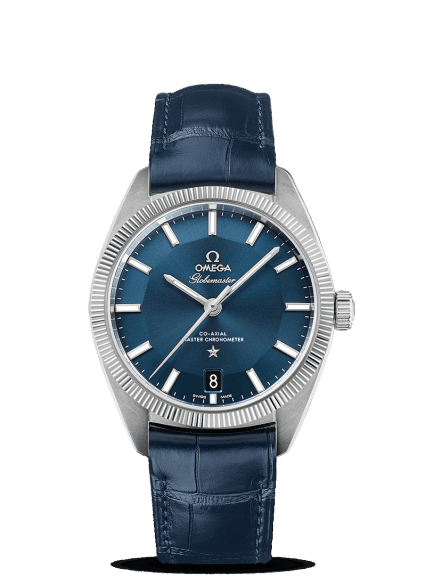
The date is fixed at six o’clock as it keeps the design clean, well-proportioned, and classic. Notice the shortened hour marker, also at six o’clock and the star, signifying that the contemporary Globemaster is part of the Constellation collection (though it is technically unrelated to the other bolder models). These are all essential considerations that make this watch work and add to its premium-factor.
This classic-looking timepiece has been magnificently upgraded with sufficient luminous paint on the hands and markers. The shape of the markers are similarly designed in the “C-Shape” Constellations of the 1960s with the black metal hands are shaped as batons. The dark hands (or silver hands; different angles project different colours of the hands) are quite visible against the whitish-silver dial. The Omega Globemaster’s dial possesses a very bright almost-blue hue lume on it. It is very lucid at night and the trimmed 6 o’clock marker makes it glow effortlessly in low-light.

Case
The renowned Gerald Genta designed the 39mm (diameter) by 12.5mm (thick) case as a reminiscence of the 1960s’ constellation models. The biggest highlight of this case is the fluted bezel feature (quite similar to that of Rolex watches). The case has four polished bevels that unite the edges of the lugs to the bezel. Its case-back is an attractive observatory medallion and is finished with the co-axial Omega calibre 8900 – the first Omega that satisfies the Master Chronometer requirements.
The rest of the case is produced from ordinary stainless steel, except the bezel which is made from ultra-hard tungsten carbide. Of course, this does not pertain to the different gold models, which use gold instead for the bezel. The fluted bezel is sturdily built to last.
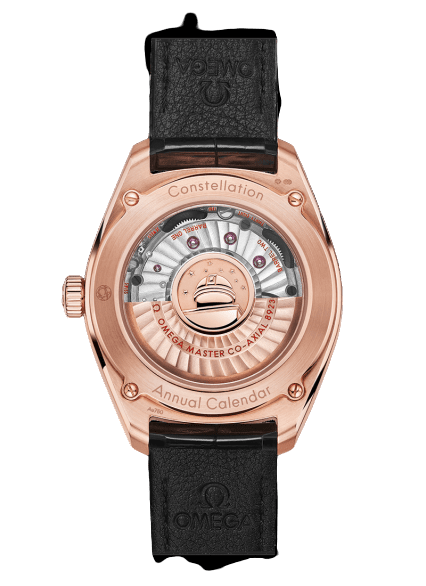
Another exciting feature of Omega Globemaster is the observatory medallion. It is homed in the centre of the sapphire crystal and can even be touched. This engaging approach is another tribute to the classic Constellation timepiece and plays on man’s wishes to ‘reach for the stars’. The observatory medallion is based on the Geneva Observatory and the eight stars that symbolise horological successes.
Movement
Omega Constellation Globemaster watches are driven by movements that have passed the two necessary chronometer tests. META-certified watches go through eight distinct tests which examine the precision of both uncased and cased movements both before and after exposure to 15,000-gauss-charged magnetic fields, claimed water resistance, power reserve, rate diversion between 100% and 33% of power reserve, diversion of rate in six positions, and the average daily accuracy of the timepiece.
The movement – 8900. The 8900 (or 8901 in solid gold models) is (on a functional level) a member of the 8500 line with a significant difference: it is the very first calibre to be METAS certified. This means the 8900 calibre has passed the conventional COSC testing, then another level of testing at the Swiss Institute of Metrology that assesses the timepieces for magnetic resistance. This in itself provides more credence to the premium value and reliability of the Globemaster collection.

The self-winding 8900 has a beautifully designed automatic rotor (in gold on the 8901 movement version fitted to the gold-cased or platinum-cased Globemaster). It provides an impressive 60-hour power reserve and operates at the more noteworthy rate of 25,200 beats per hour. The premium gold Globemaster Co‑Axial Master Chronometer Annual Calendar operates with the Omega 8923 calibre. Its base models use the 8922 calibre both of which are certified and very reliable.
Wearability
Opaline dials are found on the 18K Sedna gold, the 18K yellow gold, the stainless steel and the stainless steel and 18K yellow gold editions. All Constellation Globemaster watches come with 10 bar (100 metres) water-resistance. Some models being available in 39mm diameter with others at 41mm depending on your preference.

The watch models are available with leather, steel or steel-gold bracelets as standard that grace the wrist majestically with comfort and can be adjusted. The clasp is a push-button deployable buckle. What does uniquely set Omega apart from other watchmakers is the wide choice of straps/bracelets. All watch models allow for customisation and experimentation with the watch strap. Owners can choose from over 45 types of leather, nylon fabric polyester or polyamide designs.
Price
A premium brand will always command a premium tag-line, but even with all the features and brilliant craftsmanship of the Constellation Globemaster collection, the price points for the watch are very reasonable. For instance, the base model of the collection – the Constellation Globemaster Co‑Axial Master Chronometer 39 mm – starts from around £5,400 ($6,700 or €6,000). The prices can go up to £16,000 for the yellow gold variant.
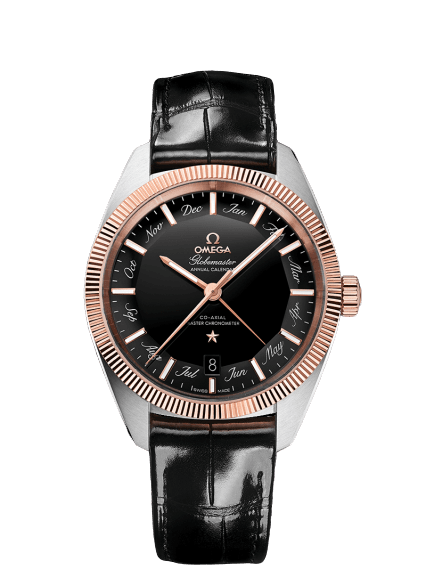
The Constellation Globemaster Co-Axial Master Chronometer Annual Calendar 41 mm starts from £6,700 the base model, going up to £19,600 for the premium range 18K Sedna Gold, blue “Pie Pan” dial model, which will be released in October 2020.
There is also, of course, the limited edition Constellation Globemaster Co‑Axial Master Chronometer 39mm in platinum. Only around 350 of these were made and is no longer available from the official Omega store. It can be sourced second-hand however with prices around the £30,000 mark.




